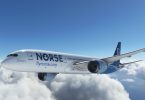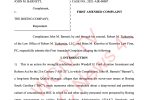The Transportation Safety Board of Canada (TSB) today released its report (A13O0125) into the 4 July 2013 accident involving a privately-registered Cessna 182 equipped with amphibious floats. While conducting a visual approach to Runway 27 at Griffith Island, Ontario, the overweight aircraft aerodynamically stalled and collided with the water approximately 1000 feet south-east of the runway threshold. The three occupants of the aircraft were fatally injured.
The TSB investigation team determined that the aircraft was over its maximum weight allowances, thus increasing the risk of an aerodynamic stall. Furthermore, the team found that the aircraft had undocumented major modifications to the seat and safety-belt installations, and that it was not in conformance with applicable airworthiness standards at the time of the crash.
The investigation concluded that while the impact forces were survivable, they were sufficient enough to cause extensive damage to the airframe, seats, and safety-belt attachments. The two occupants in the front seats did not survive due to the severity of the impact; the occupant in the rear seat who was wearing an improperly-installed seatbelt survived the impact, but then drowned.
The TSB is an independent agency that investigates marine, pipeline, railway and aviation transportation occurrences. Its sole aim is the advancement of transportation safety. It is not the function of the Board to assign fault or determine civil or criminal liability.






















